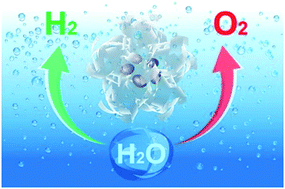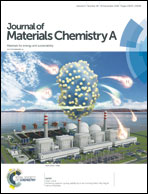Synthesis of amorphous boride nanosheets by the chemical reduction of Prussian blue analogs for efficient water electrolysis†
Abstract
Exploring efficient and earth-abundant bifunctional electrocatalysts for overall water splitting is of paramount significance for clean and sustainable hydrogen energy generation. In this work, amorphous Co–Ni–B–O nanosheets (CNBO-NSs) are synthesized by the chemical reduction of bimetallic Prussian blue analogues (Co–Ni PBAs) using sodium borohydride. The as-prepared CNBO-NSs exhibit excellent electrochemical catalytic activity and stability. They can steadily afford 10 mA cm−2 current density at overpotentials of 140 mV for hydrogen evolution and 300 mV for oxygen evolution during 24 h operation. The formation of a metal–boron bond and the improved surface area along with the enhanced conductivity in the resultant CNBO-NS structures are factors responsible for the enhanced catalytic activities. This work could offer new clues for the utilization of metal–organic frameworks for designing functional nanomaterials, and more importantly valuable insights into crystallinity engineering in efficient electrolysis for energy conversion and beyond.

- This article is part of the themed collection: 2018 Journal of Materials Chemistry A HOT Papers


 Please wait while we load your content...
Please wait while we load your content...